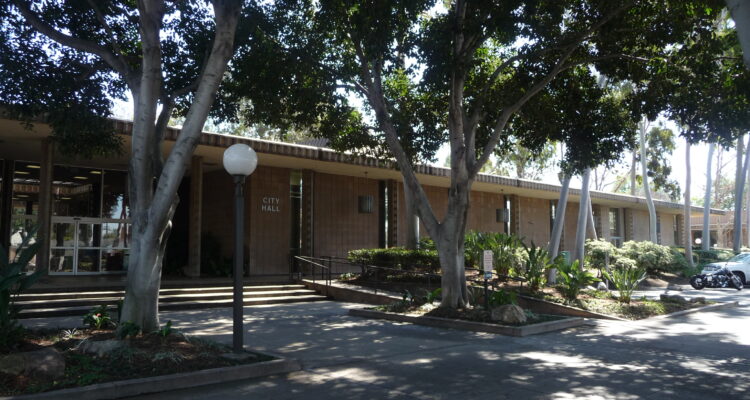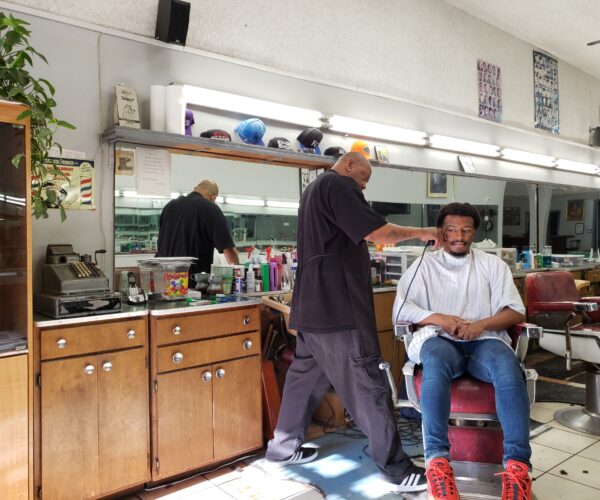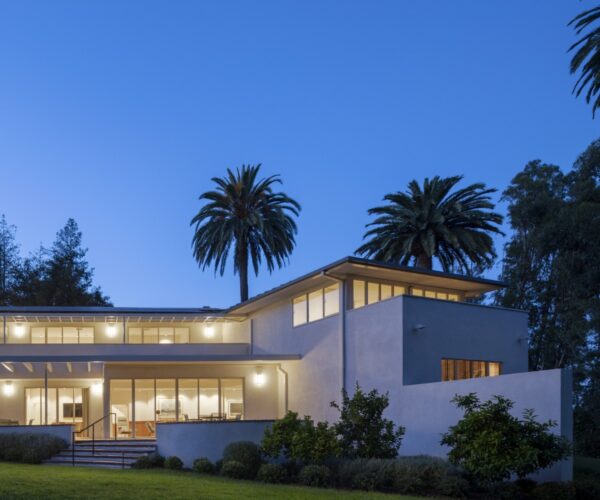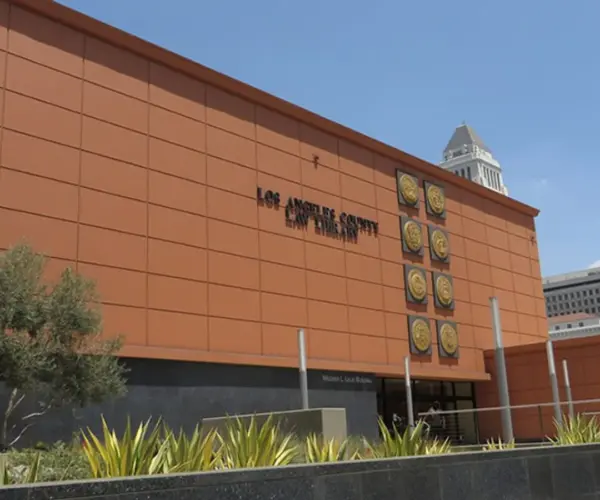
Place
Santa Fe Springs Civic Center
Renowned architect and planner William L. Pereira designed the civic heart Santa Fe Springs, creating a grouping of one-story concrete block buildings carefully sited in a landscape that harmoniously combines alleés of trees, lush plantings, and paved plazas and walkways.
Place Details
Address
Get directions
Architects
Style
Decade
Property Type
Community
Not long after Santa Fe Springs incorporated in 1957, its leaders began asking architects what they thought a civic center should be. After consulting more than twenty-five firms, they decided they liked the answer from renowned architect and planner William L. Pereira best and selected his firm to design what would become the heart of the new city.
Pereira advocated making the twelve-acre institutional property a true town center including social and commercial activities, not the typical California civic complex with buildings that are “islands in a sea of traffic and haphazard land uses which at night become dark and deserted.”
The new Civic Center, built between 1961 and 1972, sits at the northern part of the historic Clarke Estate (which includes a 1922 house by early Modernist Irving Gill). It contains a grouping of one-story concrete block buildings carefully sited in a landscape that harmoniously combines alleés of trees, lush plantings, and paved plazas and walkways.
The buildings are low-slung and understated, with wonderful decorative concrete block details reminiscent of Frank Lloyd Wright’s textile block designs.
Buildings that rose as part of Pereira’s master plan include City Hall (1967), the Post Office (1969), Town Center Hall (1972), and the Santa Fe Springs Library (1961).
The library was designed by Anthony and Langford but matches the rest of the Pereira and Associates-designed buildings in scale, materials, and massing. A fire station (1959) predates the complex but is in a complementary New Formalist style.
They feature extensive covered walkways, with those belonging to City Hall surrounding the entire building so as to serve as the corridor for the interior offices. Entrances are mostly unornamented floor-to-ceiling glass, but the library’s features an elaborate ceramic mural by Raul Esparza that extends from the exterior to the lobby interior.
Pereira’s design was successful: the Civic Center did become the heart of the young Santa Fe Springs, particularly because of its Town Center Hall. This building featured a sunken “living room” area for teenagers, a banquet hall, recreation rooms, and other multipurpose areas to facilitate community use. The architect referred to the Santa Fe Springs Civic Center as the “first opportunity in this century to create the heart of a growing city,” and it appears this opportunity was not wasted.


